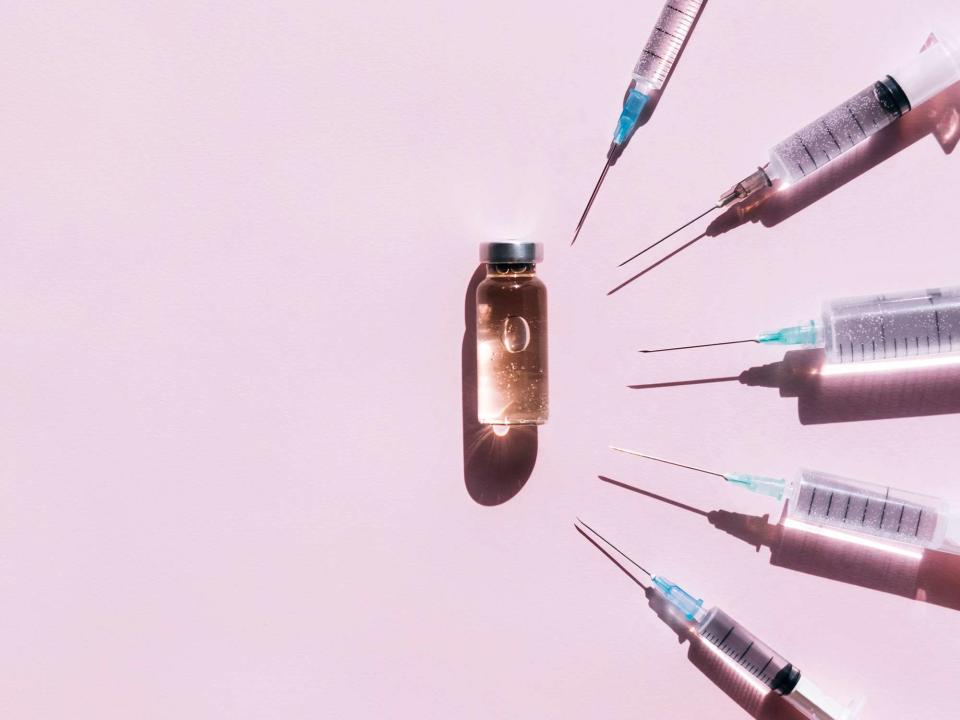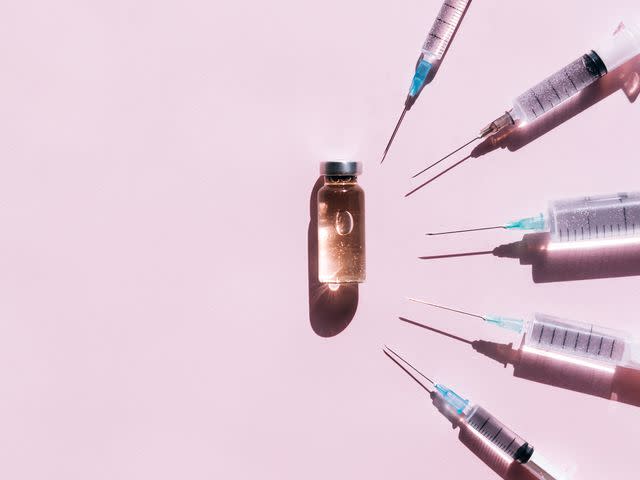11 Important Things Pros Want You To Know Before Getting Botox
From pre- and post-appointment no-nos to surprising facts about Botox.

Anna Efetova/Getty Images
When it comes to beauty treatments like Botox, heading into your appointment fully informed is always a good call. Knowledge is power, and it’s always reassuring to know what to expect. We asked expert practitioners to share the most important things you should about Botox before undergoing the needle. Whether you’ve already scheduled a visit or are toying with the idea of trying this miracle-worker of a wrinkle-smoothing injectable, you’re right where you need to be.

Anna Efetova/Getty Images
Botox Smooths Wrinkles—It Won't Change Skin Tone or Texture
Here’s the straight truth: No amount of Botox can compensate for unhealthy skin. That said, prioritize healthy skin first and foremost. “Botox works by temporarily paralyzing muscles that form wrinkles in the face and is not meant to clear any sun damage such as hyperpigmentation, broken capillaries, rough or uneven skin texture,” says Lauren Montemayor, MS, PA-C, with Deep Blue Med Spa in NYC.
For the best overall results, she recommends combining Botox with other anti-aging modalities for your specific needs. This can consist of routine skincare at home and/or preventative and restorative in-office treatments.
Treating Isolated Muscles Isn’t a Good Plan
While you may go into your appointment set on treating a single area, your provider will most likely recommend treating other areas in order to have an effective treatment and natural results.
“For instance, if your main concern is forehead wrinkles, your injector should always treat the glabella (often called the 11’s), and sometimes portions of the crows feet, in addition to the forehead in order to ensure the most aesthetically pleasing results,” explains Blair Hayes, PA-C, founder of Skin by Blair Aesthetics. “Failure to do this often results in flattened or heavy brows or unnatural muscle movements, neither of which are ideal.”
Botox Treats More Than Wrinkles
Current on-label usage for Botox includes the forehead, between your eyes (11s), and around the eyes (crows feet). However, many other popular uses for Botox exist. “It is used to treat various aesthetic concerns such as pore size, redness, acne, rosacea, excessive sweating, and facial slimming,” says Hayes. “Aside from its aesthetic uses, it is also used for migraines, overactive bladder, difficulty swallowing, teeth grinding, cold hands, digestion issues, and even depression.”
Always Choose Your Injector Wisely
“Not all Botox is good Botox,” says Tahl Humes, MD, a board-certified physician and medical director of VITAHL Medical Aesthetics. “A really good price could be front for poor injectors, slow business, watered down product, or an appointment filled with loads of pressure to commit to more treatments and buy more products.” Seek out a reputable injector and check out their work beforehand.
Avoid Blood Thinners A Week Before Your Appointment
Melanie Speed, NP, says that most of her clients are shocked to learn that you should avoid any blood thinners in the week prior to any injectable treatment. “The reason we ask clients to please avoid these blood thinners is to decrease the risk of injection site bruising and swelling,” she says. The list of blood thinners include Asprin, Advil, Aleve, Ibuprofen, Vitamins (D, E, & A), fish oils, melatonin, St. John’s Wart, high dose garlic, alcohol, ginger, ginseng, ginkgo biloba, turmeric, curcumin, cayenne, omega-3 & 6, flaxseed oil, green tea.
Don’t Exercise, Sleep, or Get a Massage After Botox
Plan your Botox appointment around any workouts, making sure to either skip the gym altogether or go beforehand. Also avoid napping (even if it’s brief!) or getting a massage immediately following your appointment. “There’s a slight risk of Botox migration if you [exercise] or lay down right after the injections,” notes Dr Humes. “While rare, if migration occurs, the result can be uneven distribution or ptosis, which is the temporary drooping of the upper eyelid.”
Botox Downtime is Pretty Minimal
Aside from taking a day off from the gym and postponing any massages, there’s virtually no downtime associated with getting Botox. “Most clients leave with little bumps at their injection sites due to product placement and a little swelling, but these go down within 20 minutes to an hour,” notes Monica Hanley, RN, BSN with Alchemy 43. “If you bruise, it will be small and can be covered up easily with makeup.”
Wait Two Weeks Before Eyebrow Microblading
A snatched brow is always a yes, but press pause on any microblading or other cosmetic tattooing until your Botox has fully settled. “Many of [my patients] don’t realize how important it is to let your Botox settle before getting your eyebrows done,” says Speed. “Botox can take one to two weeks to set in, so the eyebrows can be tattooed or microbladed asymmetrically [if you don’t wait].”
Men Are Getting Botox More Than Ever Before
If you’re a male considering Botox but worry it’s “just for ladies” know that the number of men getting Botox is higher than ever before. In fact, it’s increased by over 300% since 2000, according to the American Society of Plastic Surgeons. “Thanks to a more accepting culture in cosmetic treatments, Botox encourages more males to age just as gracefully as their female counterparts,” says Montemayor. She adds that men are more likely to give Botox a try if they've seen its rejuvenating results on others.
You Shouldn’t Get Botox if You’re Pregnant or Breastfeeding
As it stands, there haven’t been enough studies dedicated to Botox being used by pregnant or breastfeeding people, notes Hanley. As such, the FDA hasn’t cleared it as a “safe drug” during these times. Hanley recommends speaking with your primary doctor or OBGYN with any questions regarding Botox and pregnancy.
A Different Neuromodulator Might Work Better For You
Some people are Coke fans, others prefer Pepsi. Similarly, there’s a handful of different neuromodulators out there, and some might work better for you compared to Botox.
“While both Botox and Dysport are very similar products, they are made by two different companies and have several minor differences, including molecule size, accessory proteins, and core neurotoxin,” Hayes says. “I encourage all of my patients to try both products, and in my experience.” Xeomin is another neuromodulator that’s recently come onto the scene, as well.
For more Real Simple news, make sure to sign up for our newsletter!
Read the original article on Real Simple.

